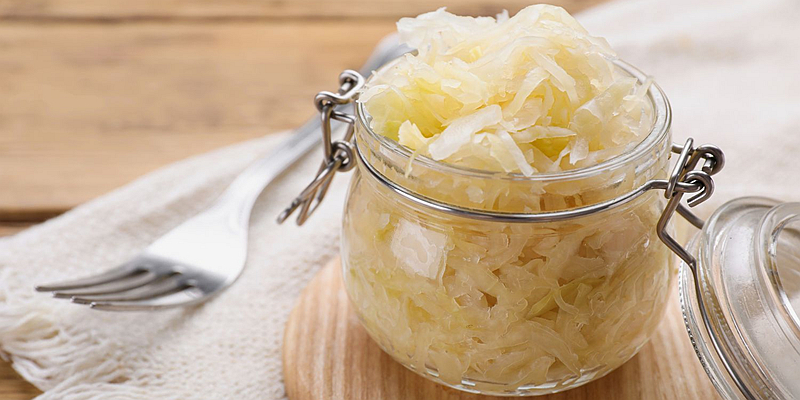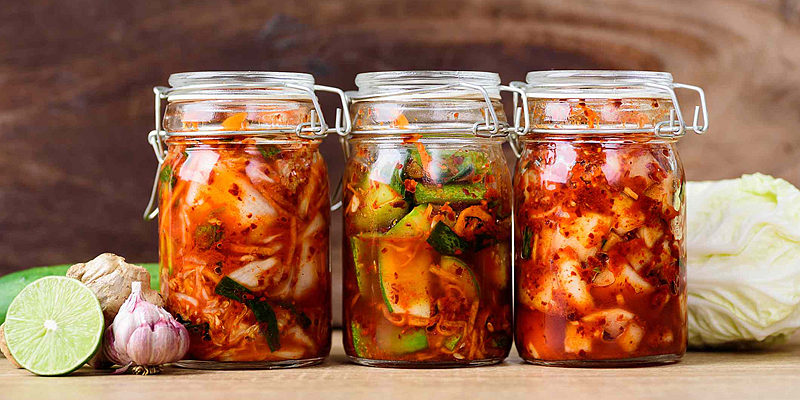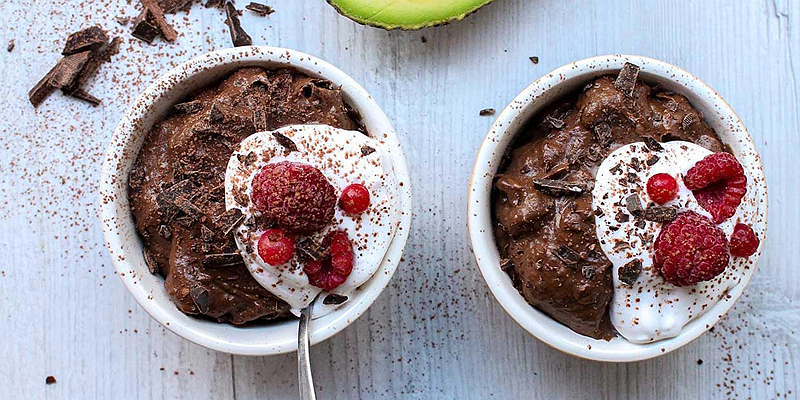How to Make Your Fermented Foods
How to Make Your Fermented Foods
Diving into the world of fermented foods is like embarking on a flavorful expedition, where every jar promises tangy, probiotic-rich treasures. As we reconnect with age-old traditions and embrace the art of fermentation, the rewards are both culinary and deeply nourishing for our bodies. If you've ever been intrigued by the alchemy of transforming simple ingredients into complex, vibrant flavours, you're in for a treat. Let's unravel the magic of fermentation together with these essential tips to guide you on your fermenting adventure.
Start Simple: Begin with Basic Ingredients
Fermentation is a culinary adventure that celebrates the essence of simplicity. You don't need a pantry full of exotic ingredients or specialized equipment to embark on this journey. Start with familiar vegetables that are easily accessible, such as cabbage, cucumbers, or carrots. Take sauerkraut, for example; it's crafted from just cabbage and salt. This minimalistic approach allows you to immerse yourself in the foundational principles of fermentation without feeling daunted. As your confidence grows, you can gradually introduce a diverse array of vegetables and experiment with various flavour combinations. By embracing simplicity at the outset, you lay a solid foundation for mastering the art of fermentation, one batch at a time.

Cleanliness is Crucial: Sterilize Your Equipment
While fermentation is inherently natural, maintaining impeccable cleanliness is vital to its success. Before you commence your fermenting endeavours, prioritize sterilizing your fermentation vessels, jars, or crocks. This meticulous step safeguards against the intrusion of harmful bacteria, preserving the integrity of the beneficial microorganisms essential for fermentation. Consider boiling your equipment in hot water or utilizing a hot dishwasher cycle to ensure thorough sterilization. Furthermore, adopt a rigorous approach to hygiene by using impeccably clean hands and utensils when preparing and handling your fermenting ingredients. You pave the way for consistently successful and safe fermentation outcomes by upholding these stringent cleanliness practices.
Embrace the Wait: Patience is Key
Fermentation is a testament to the age-old adage that good things come to those who wait. Once you've meticulously prepared and nestled your ingredients within their fermenting vessels, relinquish control and allow nature's alchemy to unfold. Various factors influence fermentation duration, including the specific recipe and ambient temperature. Resist the allure of prematurely peeking or prodding your fermenting creations, as such actions can compromise the delicate fermentation environment by introducing oxygen. Instead, cultivate patience and trust in the process, granting your ferments the uninterrupted time required to mature, evolve, and develop their distinctive flavours and textures.
Taste and Adjust: Personalize Your Ferments
One of the myriad pleasures of crafting your fermented foods lies in customization, allowing you to align your creations with your unique taste preferences. Upon reaching the culmination of the initial fermentation phase, seize the opportunity to conduct a sensory evaluation of your ferment. Does it possess the desired level of tanginess? Is there a discernible balance of flavours, or does it veer towards excessive saltiness? This critical tasting juncture empowers you to fine-tune the flavour profile of your ferment. Consider a brief rinse to mitigate the intensity if you encounter a flavour imbalance, such as excessive saltiness. Conversely, if a more pronounced tang is desired, extend the fermentation duration accordingly. Embrace the iterative nature of fermentation, recognizing that with each batch, you refine your intuition and craft ferments that resonate harmoniously with your palate.
Store Properly: Maintain Freshness and Flavor
Upon achieving the optimal flavour and texture profile of your fermented creations, the final step encompasses preserving their integrity through proper storage. Facilitate a seamless transition by transferring your ferments to clean, airtight containers before relegating them to refrigeration. The controlled cold environment of the refrigerator serves as a bastion against the relentless march of fermentation, effectively preserving the desired flavour nuances and textural crispness of your ferments. Adopt a vigilant approach to hygiene by exclusively using pristine utensils during subsequent servings, thereby mitigating the risk of contamination. By adhering to these best practices in storage, you not only prolong the shelf life of your fermented foods but also safeguard their nutritional potency and palatability.
Use High-Quality Ingredients: Flavor Begins at the Source
Embarking on a fermentation journey is akin to painting a canvas; the quality of your "colours" determines the vibrancy of your masterpiece. A fermenter should prioritize top-notch ingredients like an artist who seeks the finest paints. Fresh, organic produce stands as the cornerstone of exceptional fermented foods. Not only do these prime ingredients boast superior flavour profiles, but they also harbour a richer diversity of beneficial bacteria. These microscopic allies act as the catalysts, initiating and driving the fermentation process. Similarly, when infusing your ferments with spices and seasonings, lean towards whole, unprocessed selections. Imagine fresh rosemary's aromatic allure, organic garlic's spicy kick, or whole peppercorns' subtle heat. By integrating such elements, you're not merely fermenting; crafting a symphony of flavours that dance harmoniously on the palate.

Monitor Temperature: Create an Ideal Fermenting Environment
At its core, fermentation is a delicate ballet between microbes and their environment, and temperature is a principal choreographer. Each ferment, be it sauerkraut or kimchi, possesses its preferred temperature range, typically oscillating between 55F and 75F (13C to 24C). To ensure a successful performance, it's imperative to orchestrate the ideal setting. Scout your home for a location where the temperature remains steadfast, free from the tumultuous swings of direct sunlight or proximity to heat-emitting appliances. Such extremes can disarray the microbial dancers, potentially stalling the fermentation or inviting spoilage. Equip yourself with a reliable thermometer, the conductor's baton in this microbial symphony, ensuring your ferments bask in the perfect climatic conditions to thrive and flourish.
Experiment with Fermentation Weights: Ensure Submersion for Even Fermentation
Imagine a submarine navigating the ocean's depths, seamlessly gliding beneath the waves. Similarly, your fermenting ingredients should remain submerged beneath their briny seas, shielded from the disruptive winds of oxygen. This submersion is a protective barrier that thwarts unwanted mould growth and ensures a uniform fermentation process. While traditionalists might opt for clean, hefty objects to weigh down their ingredients, the modern fermenter can explore a plethora of specialized fermentation weights. These purpose-designed tools snugly nestle within fermentation vessels, diligently pressing the ingredients beneath the brine's surface. As you embark on your fermentation voyage, don't hesitate to experiment with various submersion techniques. Whether it's the rustic charm of a stone or the precision of a weight, the objective remains consistent: fostering an environment where every ingredient receives its share of the fermentative spotlight.
Educate Yourself: Expand Your Fermentation Knowledge
Venturing into fermentation is akin to embarking on a global expedition, with each jar and crock unveiling a new tale of taste, tradition, and technique. As with any exploration, preparation and knowledge pave the path to discovery. Immerse yourself in the rich tapestry of fermentation by delving into literature, from age-old manuscripts to modern guides that illuminate the fermenting process. Enrich your understanding through visual mediums, absorbing insights from seasoned fermenters via tutorials or workshops. Foster connections with like-minded enthusiasts on online platforms or within local community circles, where experiences are exchanged, challenges are collectively tackled, and a treasure trove of recipes awaits your discovery. Remember, as you augment your fermenting repertoire, you're not merely accumulating recipes but weaving yourself into the intricate fabric of a timeless culinary tradition.
Conclusion:
As we wrap up this fermenting journey, it's clear that fermenting foods is as much about patience and observation as it is about creativity and experimentation. Each step is a testament to the transformative power of time-honored traditions, from selecting the finest ingredients to fine-tuning flavours. By incorporating these tips into your fermenting endeavours, you're not just crafting delicious foods; you're participating in a timeless dance of flavours, cultures, and beneficial bacteria. So, savour each moment, relish each bite, and toast the joys of homemade fermented delights. Here's to your next batch of culinary triumphs!









